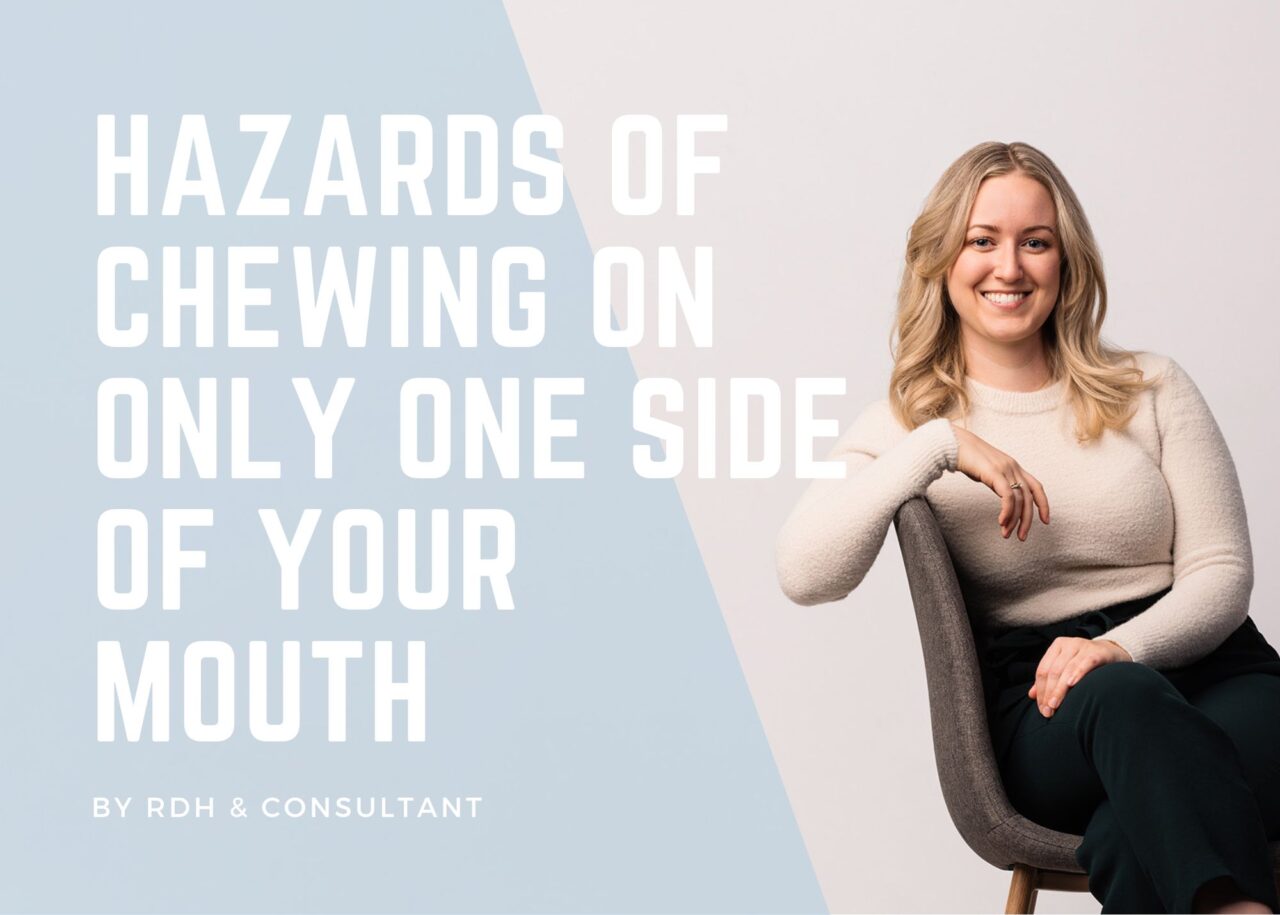
As a dental hygienist, I discuss my patients’ concerns about their mouths, teeth, and bite issues, such as asymmetrical chewing. Dental surgery, missing teeth, and dental pain can lead to favouring one side of the mouth. But is it bad to only eat on one side of your mouth?
Exclusively eating on just one side of your mouth can lead to an imbalance in the jaw muscles, causing uneven wear and force on the teeth, and affecting the way your teeth come together when you bite. This habit can ultimately alter the shape and profile of your face over time.
In this post, I will explore and discuss how eating only on one side of your mouth can impact your oral and overall health and well-being. I will also touch on how you can try to rectify the issues causing asymmetrical chewing.
Bite into the Truth: Consequences of One-Sided Eating
I always examine my patients’ mouths, including their teeth and jaw joints, and ask the patients if they are experiencing any pain or have any issues with their mouth or jaw.
Many people suffer from issues that cause an asymmetrical bite, which drove me to create this resource to help alleviate their pain and seek a solution.
However, there are many consequences of only chewing on one side of the mouth, and many are overlooked.
Consequences include;
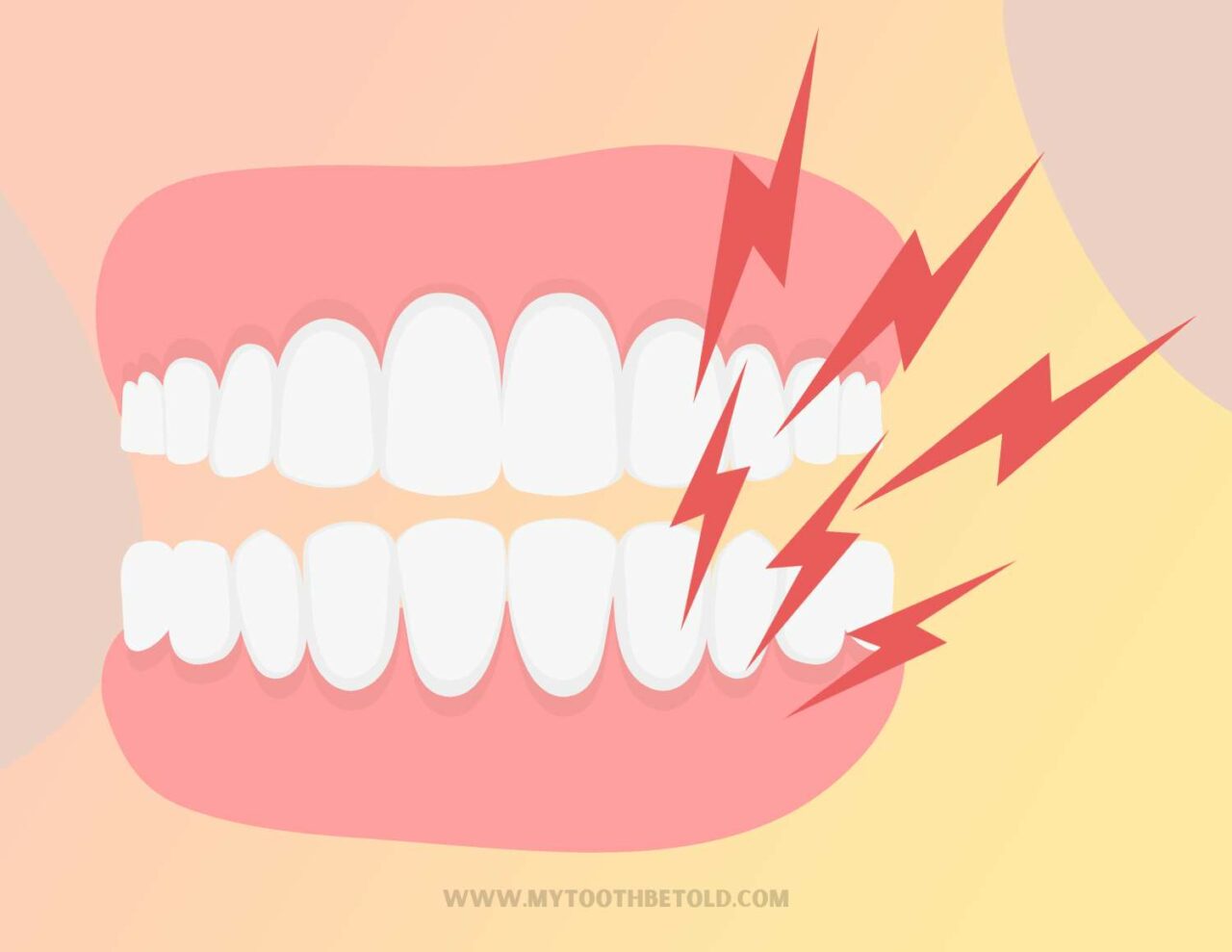
1. Uneven wear on the teeth
When only one side of the mouth does the heavy lifting of chewing, the teeth may wear down more on one side.
Teeth are only supposed to touch together during eating and swallowing.
However, if chewing is favourited on one side, the teeth can become worn down on that side due to the forces of the teeth coming together and breaking down the food in our mouths.
Uneven wear on the teeth can increase the forces of the jaws on certain teeth, increasing the risk of chips, cracks, and force on the periodontal ligaments, possibly causing pain and discomfort.
This wear can create an imbalance in the evenness of the bite, which could lead to clenching and grinding as the teeth try to make an even plane with even force distribution.
All these issues can cause pain and discomfort in the jaw and TMJ (temporomandibular joint).
The upper and lower jaws are supposed to come together harmoniously and support each other. In dentistry, we call this “occlusion.” Below is a post about how teeth should come together and support a healthy occlusion.
Read Now: Perfect Bite: How Teeth Should Line Up and Come Together
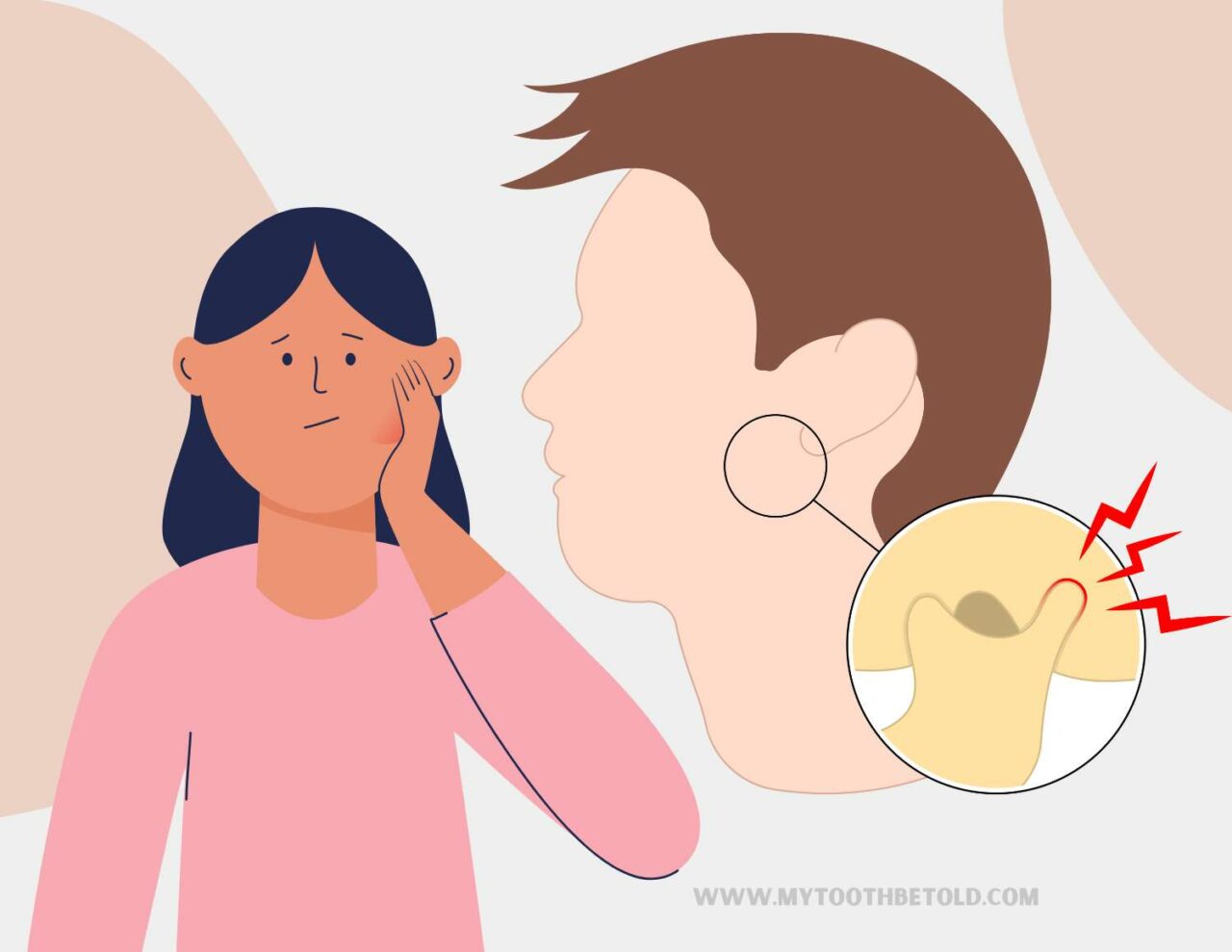
2. Pain in jaw and TMJ issues
Chewing only on one side of the mouth can cause jaw pain and TMD (temporomandibular joint disorder).
When chewing, the jaw and surrounding area muscles, particularly the masseter muscles, work really hard.
The muscles will get bigger with consistent use, like working out and lifting weights.
Every time you chew, the muscles on that side of the face are working out.
Clenching and grinding can also contribute to pain in the jaw and TMJ. The muscles overwork as the teeth try to grind down to a more comfortable position, causing pain and issues with the bite.
Dental professionals should recommend a nightguard for patients who suffer from clenching and grinding but also try to investigate why the clenching and grinding are happening in the first place.
Having a nightguard is really important for preventing damage to the teeth, but getting to the root cause (pun intended) is essential. Many factors, such as physical, psychological, and genetic, could contribute to it.
Below is essential information for choosing a nightguard for clenching and grinding! Ensure you get the right one, as many products can damage your bite.
Read Now: Can Nightguards Damage Teeth and Bite? Hygienist Explains
3. Altered facial appearance/masseter muscle growth
When our muscles overwork, over time, they will get bigger. Like training any other muscle, overuse can grow the muscle.
Clenching and grinding teeth can cause the growth of the masseter muscle, a large muscle in your cheek. When this muscle starts to grow and change shape, it changes your face shape, leading to a more pronounced jawline, more prominent cheeks, and a less slim face overall.
An altered face shape may not be an issue for everyone, but I want to provide the information in case it is.
If your face has altered shape and your masseter muscle is more significant than usual, speak to your dental professional, medical doctor, massage therapist or acupuncturist.
Having a professional opinion that is unique to you is essential to ensure its safety and effectiveness. One treatment may work wonders for one person and not another. Creating an optimal treatment plan can take a team and time.
4. Decreased digestion
Biting and chewing our food is the very first stage of digestion. Our teeth break up the food into fine pieces, and our saliva helps break down the food.
If chewing is compromised and occurs primarily on one side of the mouth, likely, chewing is not thorough enough.
Did you know that you are supposed to chew your food about 25-30 times before swallowing?
Chewing the food until it loses texture is a good rule of thumb, so you don’t need to count every bite!
But if you don’t chew for this long, it can make it more difficult for your body to break down the food and absorb all the nutrients it needs. It can also cause issues in your intestines that can lead to bloating.
5. Increased calculus (tartar) formation and gum disease
Another factor that people often don’t know or realize is that eating helps clean our teeth. When chewing, the food helps to scrape away the plaque (soft deposits of bacteria and food debris) and stimulates the gum tissue.
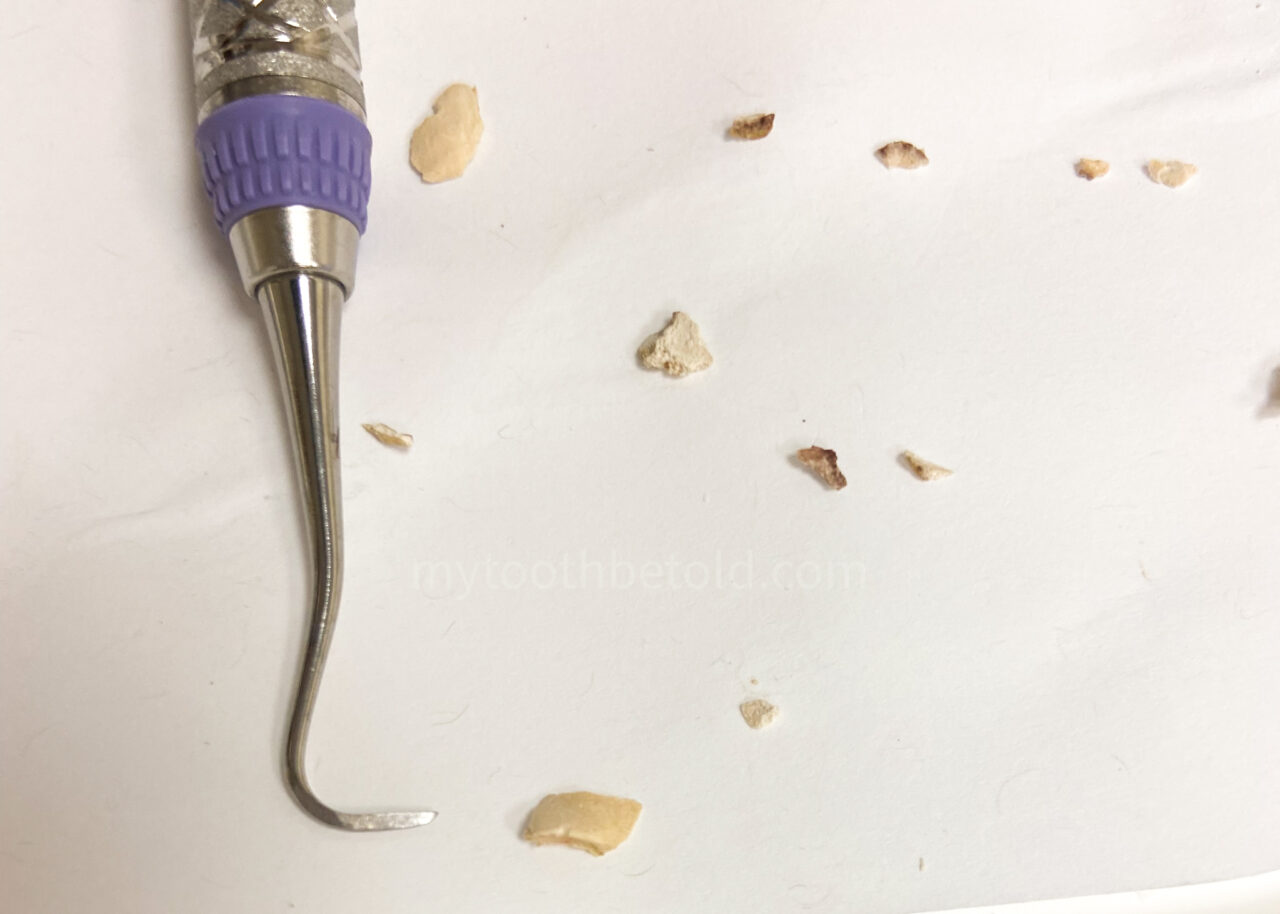
When one side of the mouth is avoided, plaque that calcifies and forms calculus (tartar) is more likely to accumulate on that side.
Because of this accelerated rate of calculus accumulation, inflammation of the gum tissue is more likely to arise. Calculus attracts more bacteria and initiates the body’s immune response to fight off the increase in bacteria.
When I am doing an oral exam of my patients, I can tell when one side of the mouth has more calculus formation, more plaque, and more inflamed gum tissue.
I always ask them if they are avoiding one side of their mouth and why.
If you are building up more calculus on your teeth, it is essential to have it professionally removed and maintain regular dental hygiene visits.
Below is a post I wrote breaking down everything that happens in a dental hygiene appointment so you can better understand what happens and its importance.
Read Now: How Dental Hygienists Clean Teeth! What You Need to Know!
Can chewing only on one side cause facial asymmetry?
Over-using the muscles on one side of the jaw due to chewing only on one side can cause the muscles on that side to grow more. More growth on one side can lead to facial asymmetry because of the imbalance in the facial structures.
By chewing evenly on both sides of the mouth, the muscles are used evenly and will not be overworked.
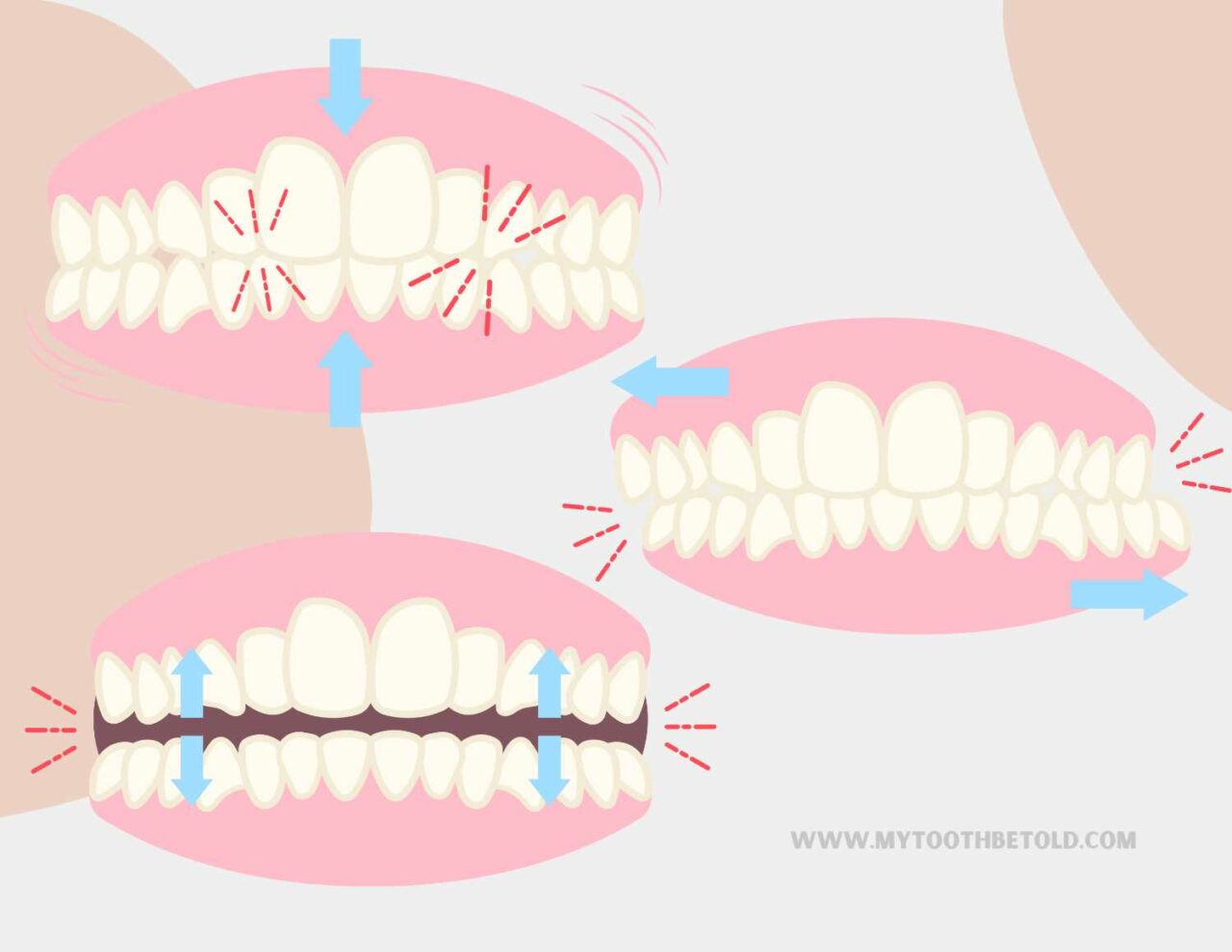
Causes of chewing on one side and how to chew more evenly
The reason must first be diagnosed before chewing more equally on each side of the mouth. Our subconscious, dental pain, lack of teeth, teeth position, orthodontic treatment, surgery, and parafunctional habits can cause unilateral chewing.
Seeing a dental professional is essential to rule out any issues, such as infections, or devise a plan to replace missing teeth.
It is much more complex than it first seems. What if your teeth do not bite together on one side, and you can only eat on one side?
I compiled a comprehensive post that includes why people favour chewing on one side of their mouth and ways to correct each issue. It is linked below.
Read now: 7 Reasons & Fixes for Lateral Chewing: Hygienist’s Guide.
I hope this information has been helpful to you, and remember to keep up with regular dental appointments if you can!
Have a great day,
Holly 🙂
